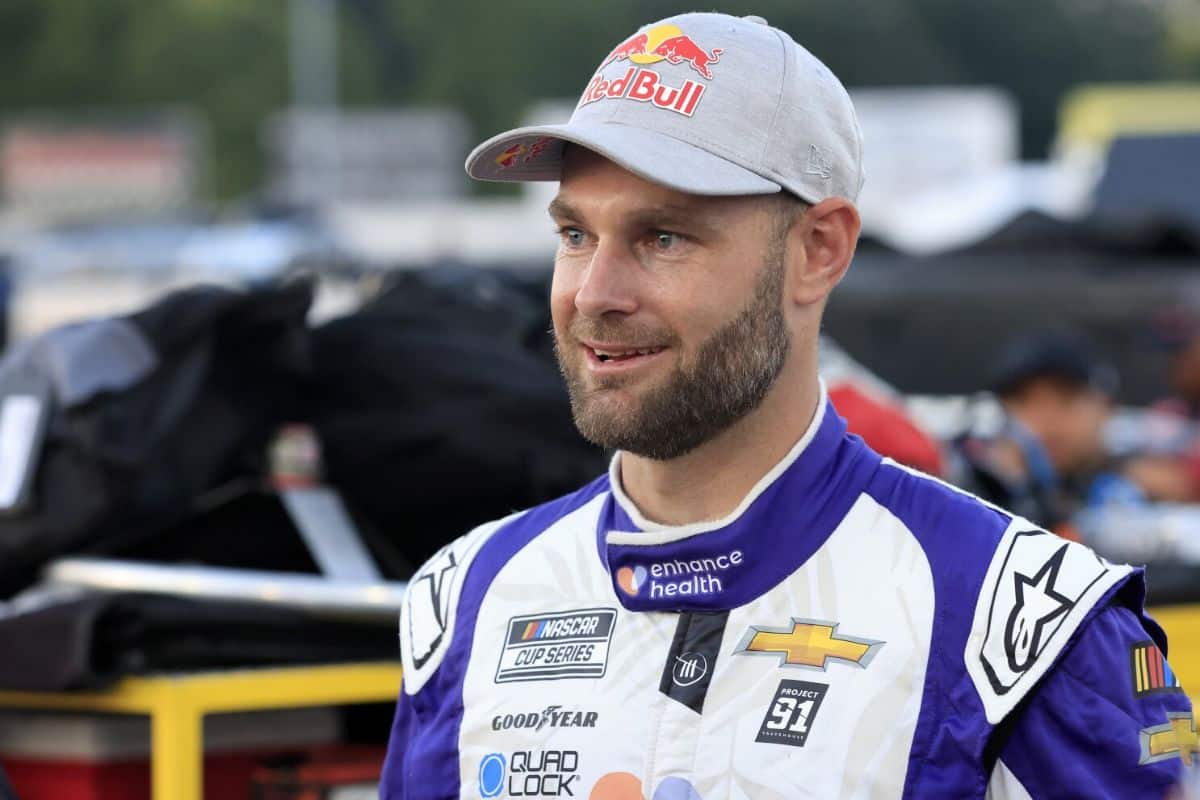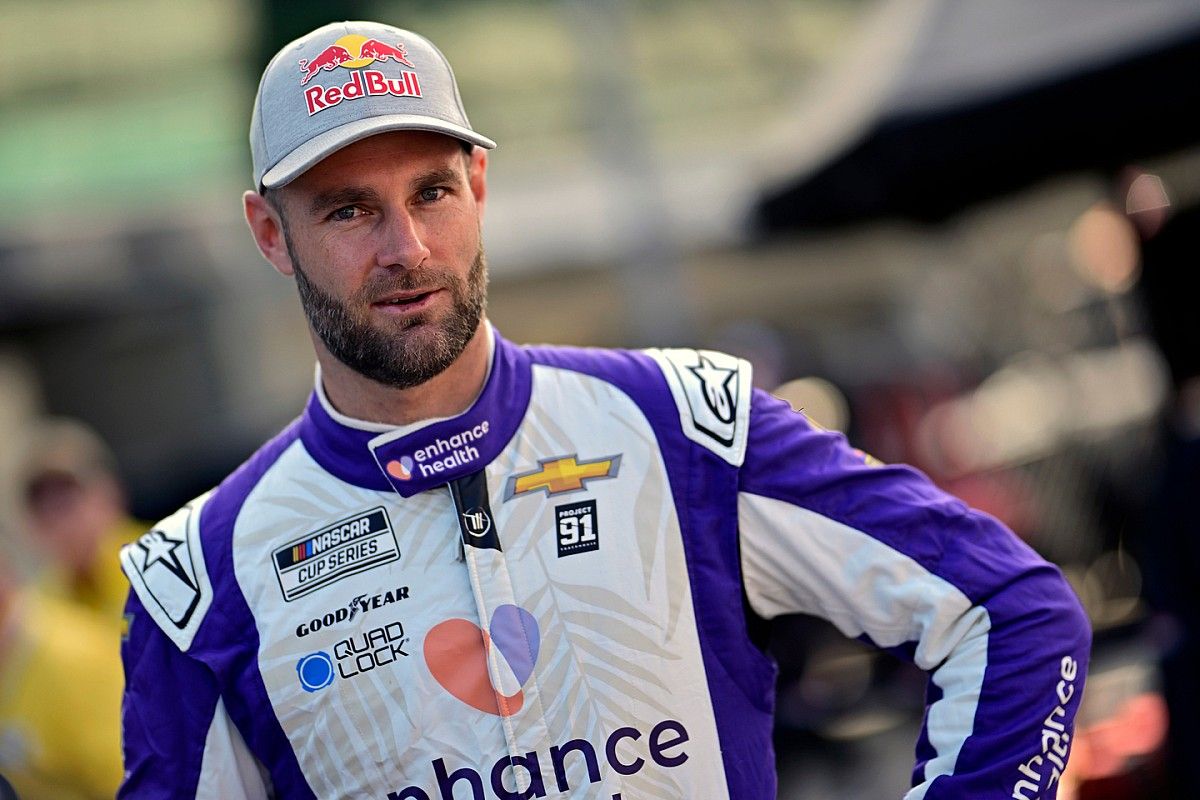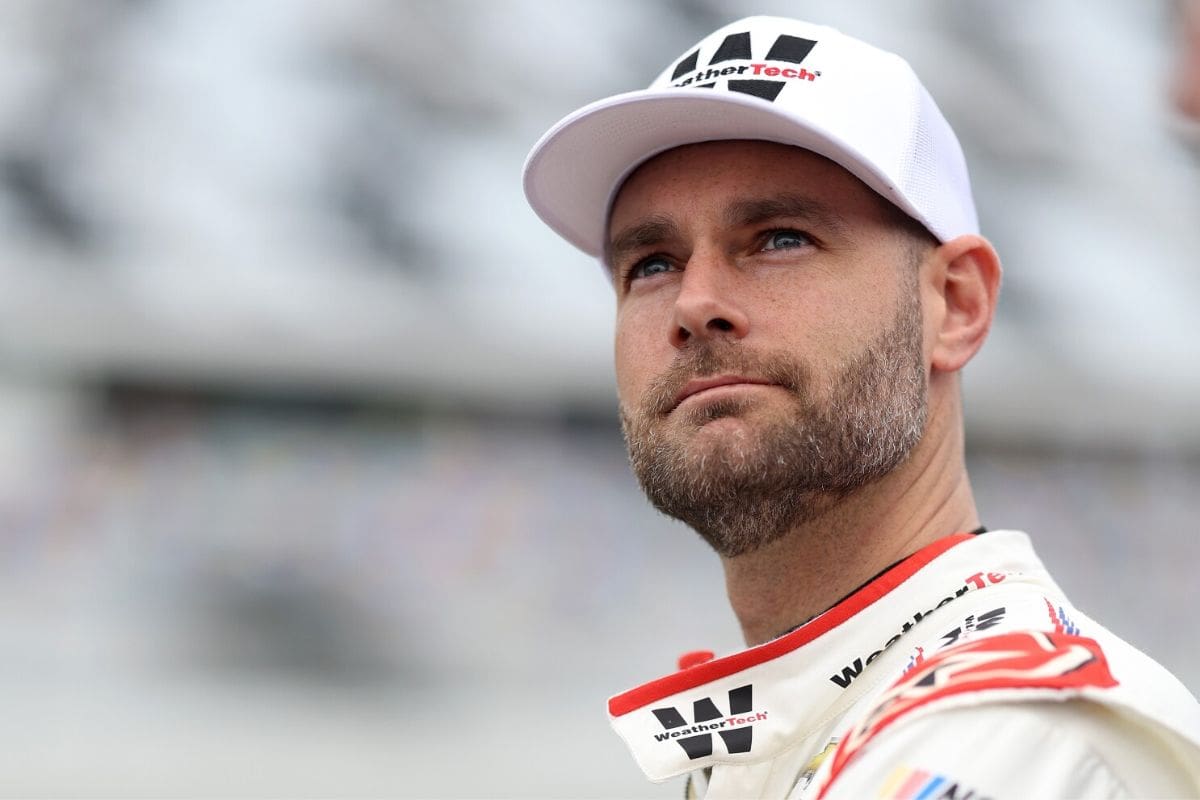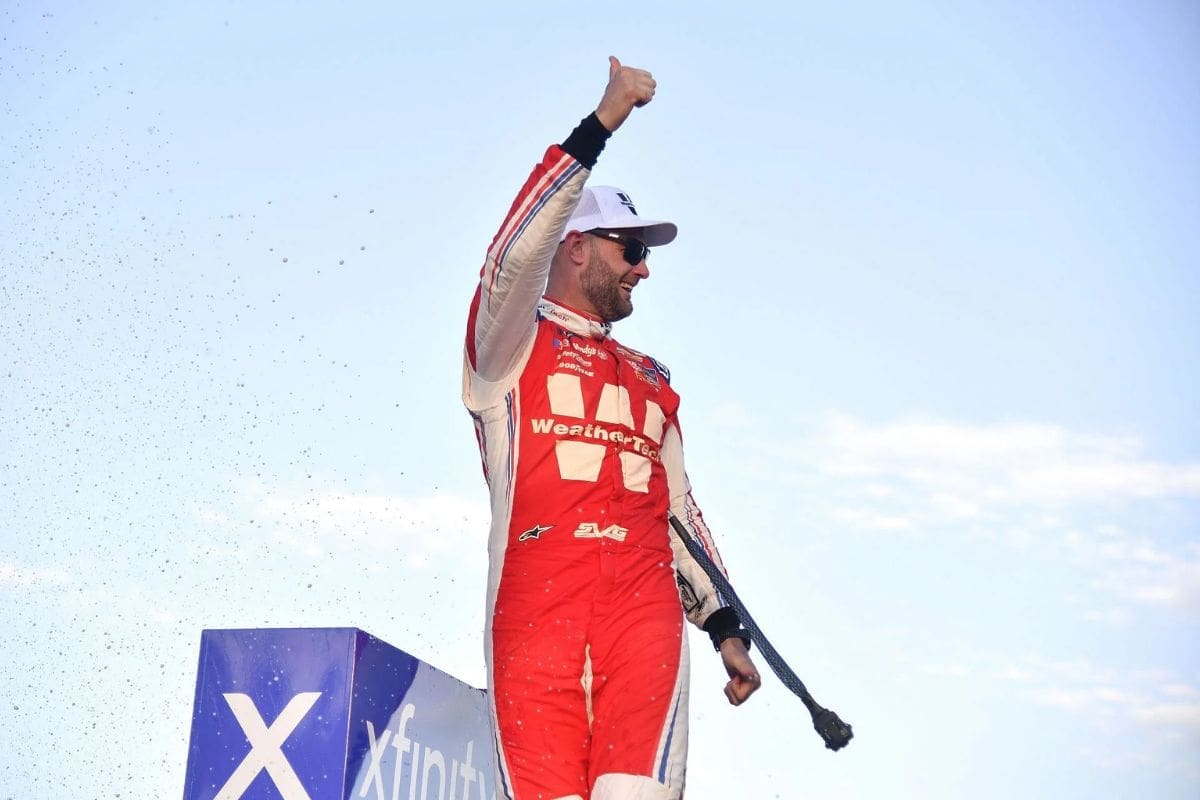Shane Van Gisbergen Takes on NASCAR: Shane Van Gisbergen‘s shift to NASCAR’s oval circuits presents a fascinating case study in adaptability and skill. Known for his expertise in diverse racing environments, Van Gisbergen now faces the distinctive challenges of continuous left turns, tire management, and drafting dynamics inherent to oval tracks. His initial venture into the Xfinity Series and a notable debut win at the Chicago Street Course have set high expectations. However, how will he navigate the subtle differences between Next Gen and Xfinity cars while mastering the strategic intricacies of oval racing? The unfolding exploration promises insights into his evolving driving techniques and competitive strategy.
Key Highlights
- Shane van Gisbergen faces unique challenges of high-speed continuous left turns on oval tracks.
- Mastering tire wear management and maintaining optimal racing lines are crucial for oval track success.
- Guidance from veterans like Marcos Ambrose and Kevin Harvick aids Van Gisbergen’s adaptation.
- Simulator training and detailed telemetry analysis enhance Van Gisbergen’s performance on ovals.
- Commitment to refining drafting techniques and adapting driving style for oval racing success.
Shane van Gisbergen’s NASCAR Debut
In an unprecedented turn of events, Shane van Gisbergen secured victory in his NASCAR Cup Series debut, making history as the inaugural driver in 60 years to achieve this feat. His success last summer highlighted his exceptional driving skills and marked a significant milestone in the crossover between Australian Supercars and American stock car racing.
Van Gisbergen, a three-time Australian Supercars champion, demonstrated an extraordinary ability to adapt to the unique demands of NASCAR racing, immediately earning the respect and admiration of both fans and his peers.
The race, held on a challenging circuit, tested van Gisbergen’s versatility and skill. His seamless shift from the Supercars to the NASCAR Cup Series was nothing short of remarkable. The significance of his achievement cannot be overstated; it emphasizes the universal nature of racing talent and the potential for cross-discipline success in motorsports.
Van Gisbergen’s immediate impact on the NASCAR scene has had a domino effect, prompting discussions about the potential for more Australian and international drivers to enter the series. His decision to relocate to the United States and commit to NASCAR full-time further highlights his dedication to mastering this new arena. The racing community eagerly anticipates how his skills will translate over a full season, particularly as he navigates the unique challenges presented by NASCAR’s diverse set of tracks.

Early Challenges and Adaptation to Xfinity Series
Adjusting to the Xfinity Series, Shane van Gisbergen faced significant challenges, particularly in mastering the distinct handling characteristics of the car. Shifting from his previous racing experiences, van Gisbergen found the Xfinity car’s dynamics vastly different. He likened the experience to ‘driving a forklift,’ a vivid analogy that highlighted the unique and demanding nature of these vehicles. This comparison highlights the significant departure from the precision-tuned machines he was accustomed to in other racing series.
The Xfinity cars, known for their heavier weight and less sophisticated aerodynamics, presented a steep learning curve. Van Gisbergen had to quickly adapt to their unique handling, which required a different driving technique to optimize performance. Unlike the agile and responsive cars he previously drove, the Xfinity vehicles demanded more physical effort and a detailed understanding of weight transfer and tire management.
Moreover, the adjustment was not merely a technical adaptation but also a psychological one. Van Gisbergen had to recalibrate his racing instincts, fine-tuning his approach to cornering, braking, and acceleration. The cars’ propensity for understeer and oversteer at different stages of a race demanded a heightened sense of control and adaptability.
Despite these early challenges, van Gisbergen’s methodical approach to learning the intricacies of the Xfinity Series began to pay off. Through rigorous practice sessions and detailed analysis of race telemetry, he gradually honed his skills, demonstrating his capacity for rapid adaptation. His persistence and commitment to mastering the Xfinity car’s handling characteristics highlighted his dedication to succeeding in NASCAR’s highly competitive environment. This phase of adjustment was essential in laying the groundwork for his subsequent performances in the series.
Impactful Debut Win at Chicago Street Course
Having navigated the complexities of the Xfinity Series, Shane van Gisbergen stunned the NASCAR community with a remarkable debut victory at the Chicago Street Course. Racing under Trackhouse Racing’s ‘Project91,’ Van Gisbergen’s win was a masterclass in adaptability and skill, particularly given the challenging conditions presented by NASCAR’s inaugural street course race. The event’s unique circumstances—marked by rain-slicked surfaces—played to his strengths, allowing him to utilize his extensive experience in diverse racing environments.
Van Gisbergen’s win was not just a personal milestone but a pivotal moment for Project91, a program designed to bring international racing talent into NASCAR. The victory highlighted the potential for cross-disciplinary success and showcased Van Gisbergen’s racing expertise. His ability to maintain composure and execute precise actions under less-than-ideal conditions demonstrated a level of mastery that caught even seasoned NASCAR observers off guard.
“I had the perfect opportunity to come in and be on a reasonably equal playing field at Chicago, since street circuits are sort of my deal.”
“America’s a massive place, and there are so many young, talented drivers coming through. It’s hard for people to come over here and break into it, so I’m pretty lucky.” – Van Gisbergen
The Chicago Street Course itself presented an array of challenges, from tight corners to varying road textures, all exacerbated by the rain. Van Gisbergen’s seamless navigation of these obstacles demonstrated his exceptional car control and adaptability. This win was not just about speed but also about strategic thinking and technical proficiency, elements that Van Gisbergen executed flawlessly.

Navigating Differences Between Next Gen and Xfinity Cars
While the Xfinity Series car remains rooted in traditional NASCAR design, the Next Gen car’s modernized features have introduced a new level of adaptability and competition in the Cup Series. This evolution has brought forward several key differences that drivers like Shane Van Gisbergen must navigate when switching between the two.
The Next Gen car boasts a more symmetrical design, incorporating independent rear suspension and a sequential gearbox, which diverges notably from the Xfinity car’s solid rear axle and traditional H-pattern shifter. This advancement in the Next Gen car allows for improved handling and a more road-course-friendly setup, catering to a diverse array of racing talents.
“[I’ve learned] a huge amount of things, like just how funky the Xfinity car is to drive,”
“The biggest thing is that the Cup car, it feels like a race car. It feels like every other car I’ve driven around the world, with the aero and the rear end. It’s a huge evolution of a NASCAR, I guess, to go the whole different route that they have. Even on the oval, it kind of feels like a normal car. – svg
Aerodynamically, the Next Gen car also presents a different challenge. It features a lower center of gravity and a more robust aerodynamic package, which boosts downforce and stability at high speeds. The Xfinity car, on the other hand, adheres to a simpler aerodynamic profile, which demands a different approach to cornering and drafting, especially on high-speed ovals.
“Whereas the Xfinity car, it’s only specific to oval racing, basically. The style of car that has been designed and developed for years, that NASCAR type of stock car. The rear end is really, really interesting, how it moves around. I’ve never driven a car like that.” – SVG
The Next Gen car’s use of a single-lug nut wheel design contrasts sharply with the Xfinity car’s traditional five-lug nut setup, impacting pit stop strategies and execution. This shift requires teams and drivers to adapt their approach to guarantee the efficiency and precision necessary for competitive racing.
Challenges on Oval Tracks and Learning Curve
Mastering NASCAR’s oval tracks presents a distinct set of challenges for Shane Van Gisbergen, requiring an adjustment to the unique demands of high-speed, continuous left turns and close-quarter racing. Unlike road courses, which feature a variety of turns and elevation changes, oval tracks necessitate a constant focus on maintaining best lines and managing tire wear over prolonged high-speed laps. This shift in racing dynamics demands a refined skill set, especially in drafting and throttle modulation, areas where Van Gisbergen continues to develop.
“The ovals are very, very, very difficult.”
“But I feel like I’m getting better and better, finishing the races with straight cars and starting to get more and more competitive. Road courses are [my] strength, but I don’t know if ovals are a weakness. We’re obviously not running at the very front, but getting better and better and learning a lot. So it’s kind of about where we expect it to be” – svg
One of the primary hurdles for Van Gisbergen is the steep learning curve associated with oval track racing. Having excelled in road courses, he is now dedicating efforts to mastering the intricacies of oval circuits. This includes understanding the aerodynamic subtleties that influence car behavior in packs and the critical importance of pit strategy during caution periods.
Guidance from NASCAR veterans like Marcos Ambrose and Kevin Harvick has been instrumental in this adjustment. Their insights help him navigate the mental and physical demands unique to oval racing. Van Gisbergen’s commitment to improving his performance is evident in his proactive approach to learning. He has welcomed simulator training, detailed telemetry analysis, and race debriefs to enrich his understanding of oval track tactics. His openness to feedback and willingness to adapt his driving style highlight his drive to succeed in American stock car racing.
“I’ve had some great people helping me, with Kevin Harvick and Marcos Ambrose, and then my teammates A.J. [Allmendinger] and Josh [Williams] as well,” he said. “They’re always open to anything I ever ask.
“A.J.’s a good yardstick. He’s obviously capable of winning on the ovals, and we’re in the same equipment. If I can be matching him or running near what he’s doing in the races, that can only be a good thing. I’m trying to learn what he’s doing with the car to make it faster to try and match him.” – svg

News in Brief: Shane Van Gisbergen Takes on NASCAR
Shane Van Gisbergen’s exploration into NASCAR’s oval tracks highlights a dedication to mastering the intricacies of this unique racing environment. By focusing on ideal racing lines, tire management, and drafting techniques, Van Gisbergen demonstrates adaptability and skill.
His impactful debut, especially his victory at the Chicago Street Course, exemplifies a driver poised for success. This progression from the Xfinity Series to understanding the subtleties of Next Gen cars solidifies Van Gisbergen’s status as a formidable contender in American stock car racing.
Our Reader’s Queries
Q. What NASCAR series is Shane van Gisbergen?
A. Van Gisbergen is currently navigating his inaugural season in the second-tier Xfinity Series, with many in the racing community viewing this year as a crucial opportunity for him to acclimate to oval racing. It’s widely speculated that this preparatory phase is laying the groundwork for his eventual ascent to the premier Cup Series.
Q. How much did Shane van Gisbergen win in NASCAR?
A. Supercars standout Shane van Gisbergen made an impressive splash in NASCAR by clinching victory on his debut race on the streets of Chicago. Reports suggest he potentially earned a substantial portion of the $7.5 million prize pool, with some estimates reaching as high as $1 million, though concrete verification is challenging to confirm.
ALSO READ: Shane Van Gisbergen Shakes up NASCAR’s Road Course Hierarchy

